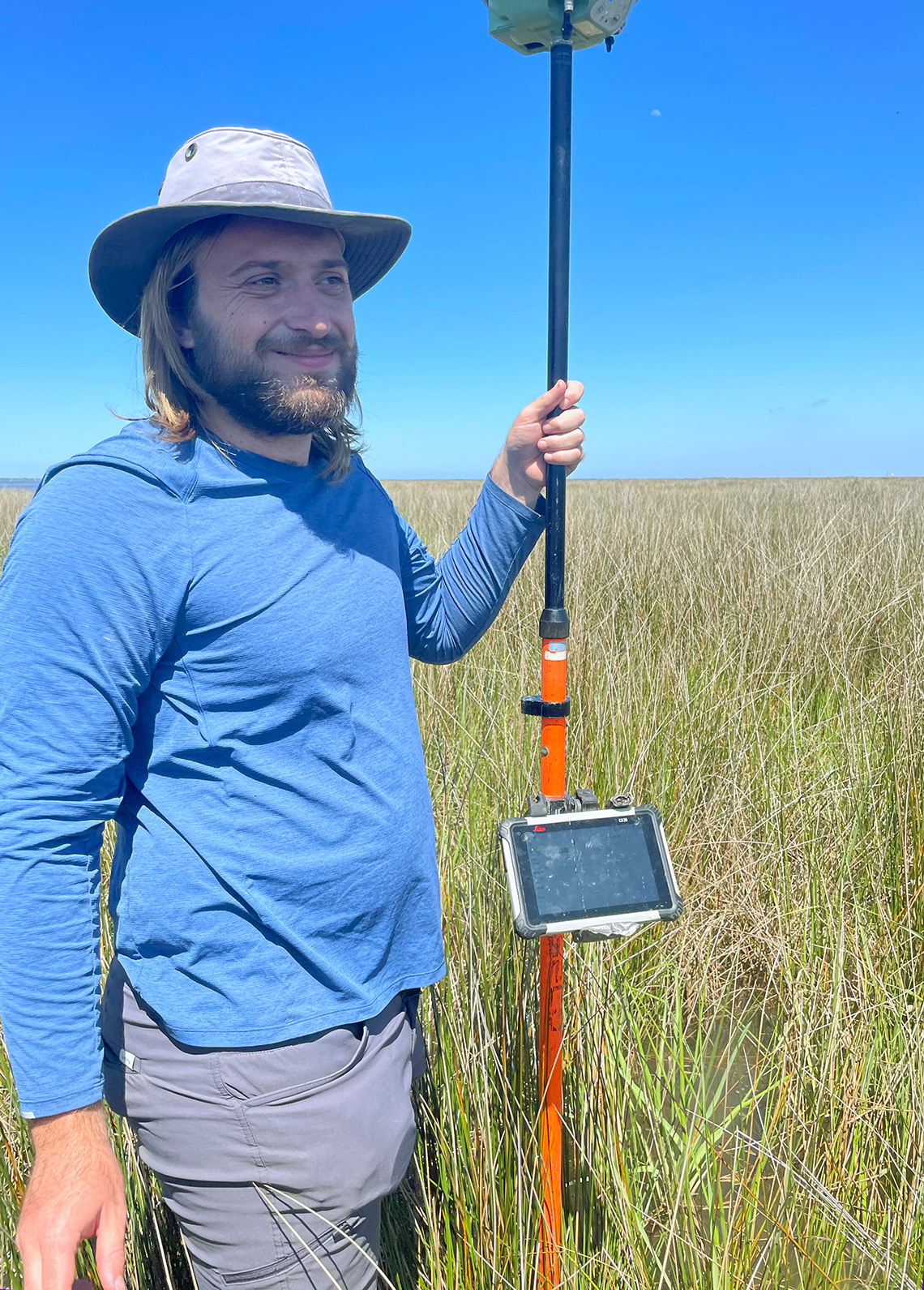How to rebuild a wetland
January 31, 2024

DOCS Masters student Kevin Stoner uses an RTK GPS to measure elevation at in the Big Branch National Wildlife Refuge.
– Photo credit: Kevin Stoner
Oceanography & Coastal Sciences Masters student Kevin Stoner is working on research about best practices in restoring Louisiana's wetlands
BATON ROUGE - Since the original coastal master plan was released by Louisiana’s Coastal Protection and Restoration Authority, or CPRA, in 2007, hundreds of restoration projects of varying types have been undertaken throughout the state’s waterways and coastlines. The work is ongoing, as scientists and engineers continue to learn more about the functioning of these valuable ecosystems, and the best ways to preserve and restore them.
CC&E’s Kevin Stoner, a Masters student in the Department of Oceanography & Coastal Sciences, or DOCS, was initially drawn to Louisiana because of his interest in coastal restoration projects. “The restoration in Louisiana is so big,” said Stoner, who completed a Bachelor’s in Wildlife and Fisheries at Clemson, before coming to LSU.
He now works in DOCS Associate Professor Tracy Quirk’s Wetland Plant Ecology Lab, conducting thesis research related to a key component of coastal rebuilding – the intricacies of wetland restoration.
Stoner is looking to determine ways to improve the methods currently used in marsh creation by studying two separate sites in the brackish marshes at the northern shore of Lake Pontchartrain, in Big Branch National Wildlife Refuge. They were heavily damaged during Hurricane Katrina, and CPRA has built new marsh to help repair the ecosystem. Stoner is looking at two separate sites within the refuge, measuring how each gains land, which plants take root, sampling soil and water quality, and comparing them to some naturally occurring marsh nearby.
This kind of research is important to coastal restoration, Quirk said. “Billions of dollars and a lot of effort is being spent on marsh creation projects across the coast of Louisiana so it is important that created marshes are providing the functions that we value such as wildlife and fish habitat, improving water quality, providing a buffer from storm impacts, sequestering carbon and over the long-term, being resilient to sea-level rise. Kevin’s research will provide information on what conditions promote some of these habitat values.”
Small variations, big differences
Documenting even small variations can make for big differences in restoration efforts down the line. “Even if we can improve these projects by one or two percent, that, scaled up, would mean big differences in outcomes,” Stoner said.
The two sites he is monitoring represent different techniques for marsh building.
One represents frequent practice: it is hemmed in on all sides by a high elevation containment dyke, or levee, designed to prevent the valuable marsh sediment from escaping into open waters.
In the other site, excess sediment was poured into the area at construction, causing the sediment to overflow its walls. The overflow sediment settled outside the containment wall creating a marsh connected to the area around it. This marsh also sits at a lower elevation than the other one, something else that may have an effect, Stoner said.
He hopes his research will shed light on conditions that produce healthy functioning wetlands for the longest time period into the future. Marsh built at a higher elevation may flood less frequently, and invite the growth of trees and other non-marsh vegetation, while containment walls may limit sedimentation and dispersal of desired types of vegetation.
“Restoration practices impact the plants that will colonize and grow and ultimately how the marsh functions,” he said.
Stoner plans on graduating this summer. After that, “I hope to continue working on research that focuses on restoring or preserving ecosystem health and resilience,” he said.
John White, CC&E’s Associate Dean of Research and a DOCS professor, noted many projects like this are going on at CC&E. “This research being conducted by Kevin is just one outstanding example of how the College of the Coast & Environment at LSU is helping the citizens of Louisiana deal with extreme coastal land loss, ensuring our coastal communities are still here for generations to come.”